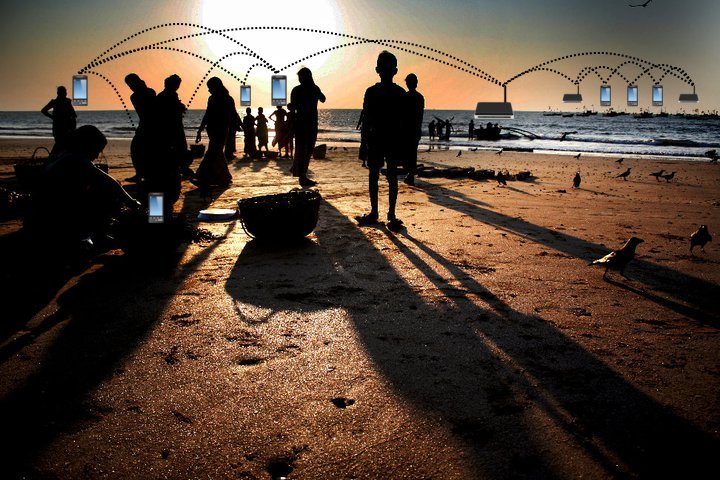You are here
submitted by Samuel Bendett
Homeland Security Newswire - August 18, 2011

Communication networks typically collapse when they are needed most -- during and in the immediate aftermath of massive disasters; researchers have developed a -- an innovative wireless system called LifeNet designed to help first responders communicate after disasters; LifeNet is a mobile ad-hoc network designed for use in highly transient environments that requires no infrastructure such as Internet, cell towers or traditional landlines.
In the aftermath of most disasters — from the terrorist attacks of 9/11 to this year’s earthquake in Japan — communication systems have been overwhelmed, leaving people without phones and Internet when they need these tools the most.
Georgia Tech College of Computing researchers have developed a possible solution. It is an innovative wireless system called LifeNet designed to help first responders communicate after disasters. LifeNet is a mobile ad-hoc network designed for use in highly transient environments that requires no infrastructure such as Internet, cell towers or traditional landlines.
“It’s an independent network you can join,” said Santosh Vempala, Georgia Tech distinguished professor of computer science in the College of Computing.
“It doesn’t need wires, antennas, cell towers and so on, and it works across platforms like laptops and smart phones. We imagine relief agencies would be able to set up a network right away and communicate about what’s needed.”
A Georgia Tech release reports that Vempala and his graduate student, Hrushikesh Mehendale, demonstrated the LifeNet system at the ACM SIGCOM conference in Toronto, Canada, on Monday.
The standard for post-disaster communications is the satellite phone, which, at $600 or more per unit, can be expensive to own, and, at 50 cents per text, costly to use.
LifeNet, however, bridges connectivity between a satellite phone or other Internet gateway and a WiFi-based network on the ground. It extends the coverage of a satellite phone or a service such as SMS from one computer with access to the entire independent network in the field. Essentially, that means several people in the field who may not have satellite phones but have smart phones or laptops with WiFi capability can connect to the LifeNet network, communicate with each other with no other infrastructure and use the Internet as long as any one of them has access.
“Currently available options such as satellite communication are expensive and have limited functionality,” Mehendale said. “If you use LifeNet, the cost savings per text message is 100 times less than a satellite phone.”
LifeNet is also easy to set up. The network starts as soon as a node is put in place. Each LifeNet-enabled computer acts as both a host client and a router, able to directly route data to and from any other available wireless device. Nodes can be moved from location to location as needed, and the network remains intact.
The software developed by Vempala and Mehendale for LifeNet provides basic communications that are low bandwidth and reliable. It does not allow users to stream video, for example, but it can send text messages for basic communication needs.
“It’s a trade-off of performance for reliability,” Vempala said. “Reliability is really what you need the most in these situations.”
During the demo at SIGCOMM, conference attendees could see the Atlanta-based LifeNet network via a Web-based interface in Toronto. They were able to log into the network, send messages, move nodes, and see how communication is affected.
Georgia Tech researchers are currently ready to deploy LifeNet for field testing and are looking to expand beyond crisis communications.
The release notes that Vempala’s team recently partnered with Tata Institute of Social Sciences India, which has a disaster management center. Together, the researchers identified cyclone-affected areas without communications infrastructure that could benefit most from LifeNet. As a result, researchers will be deploying LifeNet in the Mohali region of India over the next several months.
“In an area without any other connectivity, we will establish a set up that could be used daily and could also be specifically helpful during a disaster,” Mehendale said. “We need to make the solution a part of their daily lives since people cannot afford costly equipment like satellite phones in third-world regions.”
The researchers also hope to pitch LifeNet as a package to FEMA, the Red Cross, and other U.S. relief agencies soon.
“There are many recent situations, like the Mississippi floods this summer, where this would have been valuable,” Vempala said. “People were trapped. Cell phones were not working, the Internet is down and people don’t have a way to communicate… . LifeNet can be the solution.”
http://www.homelandsecuritynewswire.com/innovative-disaster-communication-tech-developed
LifeNet



Recent Comments